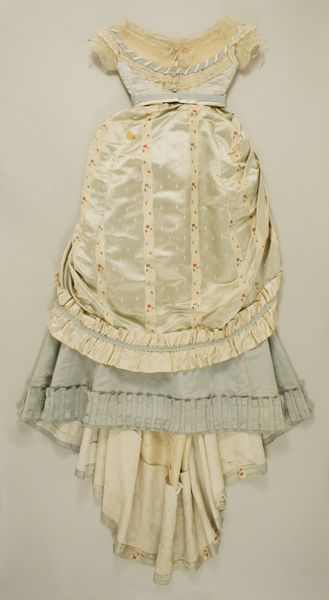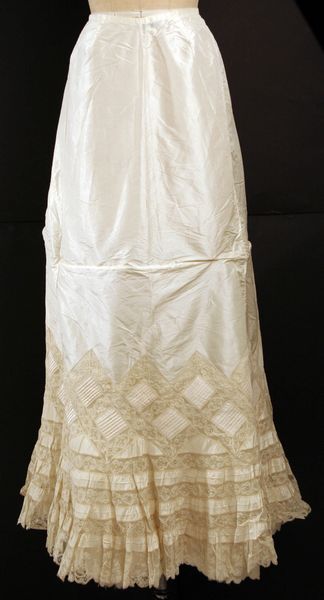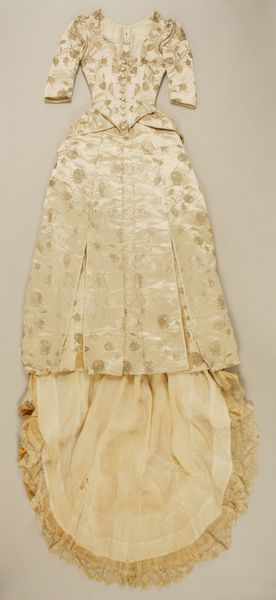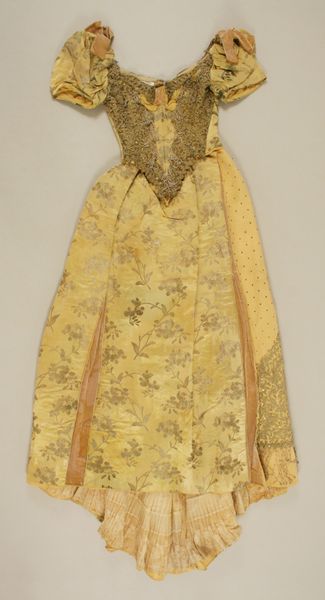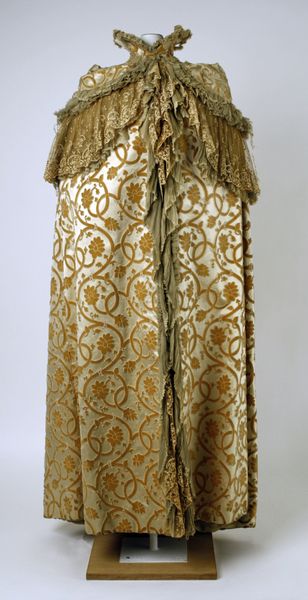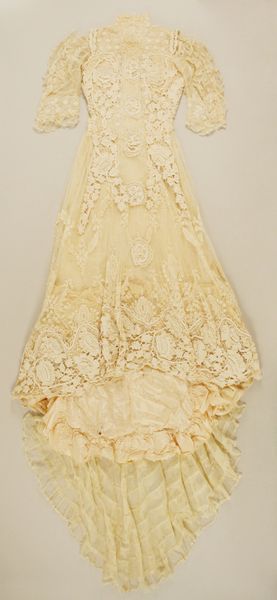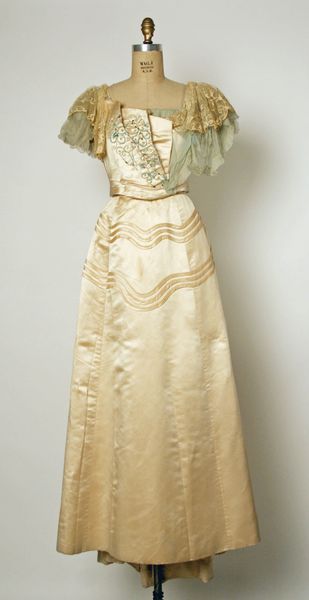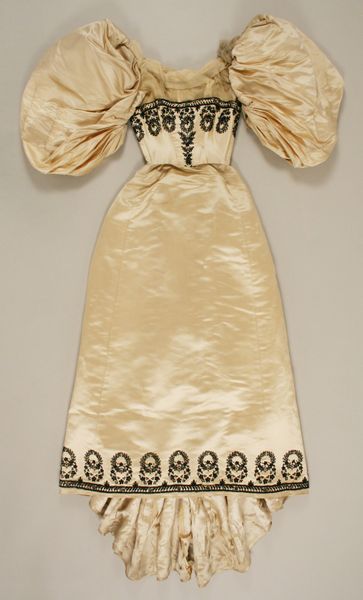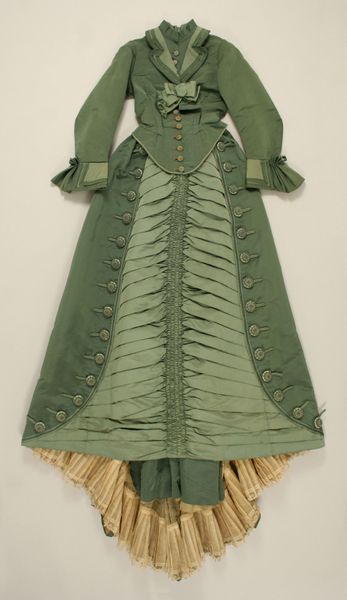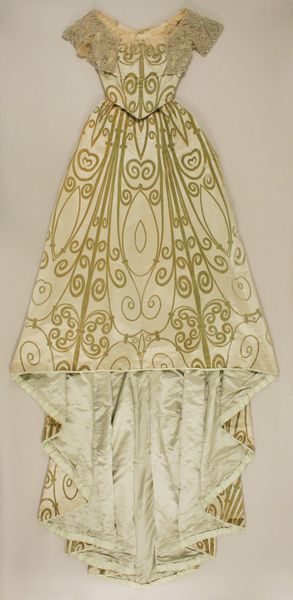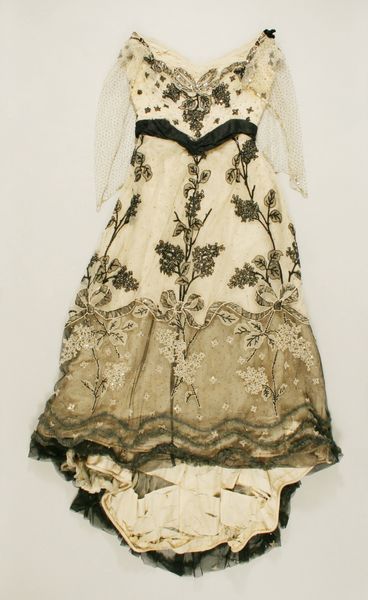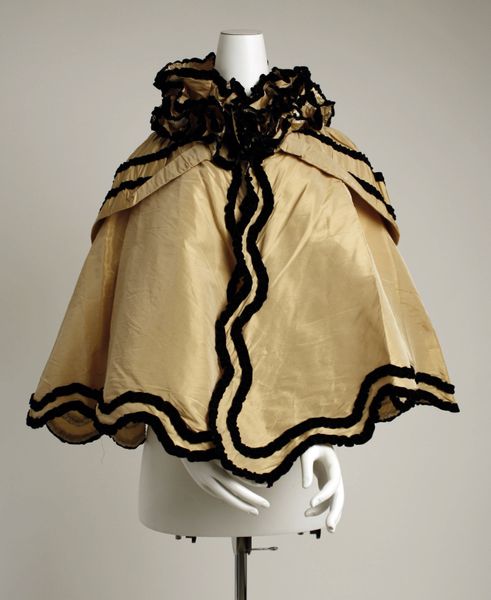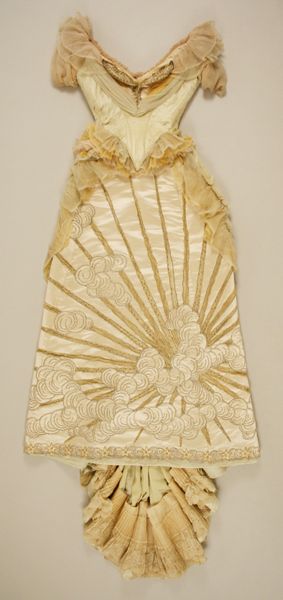
Copyright: Public Domain
Editor: This "Ball Gown," dating from 1882 to 1892, by the House of Worth, uses textile to achieve this elaborate shape and intricate decoration. It almost feels like a sculptural object, more than just a dress. What's most interesting about this piece to you? Curator: It's crucial to consider the material and the labor involved in producing such a gown. Think about the silk – where did it come from? Who spun it, dyed it? The embellishments too, each ribbon, each stitch. These weren't simply aesthetic choices; they represent a vast network of production and consumption. Editor: So, beyond its beauty, it reflects an entire industry? Curator: Exactly! And we must remember that Worth was catering to an elite clientele. This gown embodies the opulence of the Gilded Age, a period of intense economic inequality. The materials signify status, wealth, and power, showcasing how clothing functioned within a rigid social hierarchy. Editor: So it’s less about the individual designer and more about the system? Curator: It's both. Worth's genius was in understanding and catering to the desires of his wealthy patrons. However, his success was also built on the backs of countless workers, often exploited, who produced the materials and constructed these elaborate garments. Editor: That reframes how I see it. Now I see labor embedded within the fabric itself. Curator: Precisely. Examining the materials and the means of production opens up a conversation about labor, class, and consumption that goes far beyond the surface aesthetic of the gown. It gives us a tangible connection to the economic realities of the time. Editor: That’s given me a whole new appreciation, seeing it not just as a beautiful object but as a historical artifact. Thank you.
Comments
No comments
Be the first to comment and join the conversation on the ultimate creative platform.
